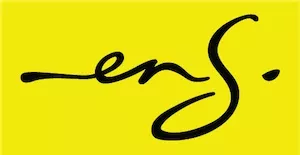- within Intellectual Property topic(s)
- in United States
- within International Law, Environment and Finance and Banking topic(s)
In this article, we discuss an interesting trade mark case that recently came up in the USA. The article deals with the issue of descriptive trade marks related to the case.
Facts
In 2020, Swiss fashion company Vetements Group AG applied to register the trade mark VETEMENTS (in standard and stylised characters) in the USA – the application covered both clothing and online retail services. All trade mark applications are, of course, examined by the US Patent and Trademark Office ("USPTO").
The USPTO
On 21 May 2025, the USPTO refused the application. The basis for the refusal was that the word 'vetements' is generic or descriptive in the context of clothing, and as a result, is not capable of registration as a trade mark. The refusal was taken further.
The Federal Circuit
The Federal Circuit agreed with the USPTO. The case found its way to the US Trademark Trial and Appeal Board, which similarly refused to register the trade mark on the basis that the word 'vetements' is generic when applied to clothing and related services. The board made the point that the relevant consumer would translate the word 'vetements into 'clothing'.
What follows is a summary of some of the major points that were made by the US Trademark Trial and Appeal Board:
- Vetements – It was made clear that an 'appreciable' number of US consumers know full well that 'vetements' is the French word for clothing.
- Commonly spoken: Interestingly, it was noted that French is a 'commonly spoken and taught language in the USA', and that this makes the word VETEMENTS directly descriptive of the goods. I wonder if the average French tourist would agree with this assessment!
- Generic: The word VETEMENTS is generic in the context of clothing, and it is unregistrable as a trade mark, despite evidence of acquired distinctiveness.
- Foreign equivalents: The claim that the so-called 'foreign equivalents doctrine' only applies where a majority of Americans understand the foreign word was rejected. Au contraire (see what I did there), it is sufficient if an 'appreciable number of consumers are capable of translation'.
- Modern languages: It was noted that 'words from modern languages are generally translated into English'.
- Generic terms: Generic terms cannot indicate the origin of goods and services and are incapable of acquiring distinctiveness, irrespective of extensive use. It then follows that they cannot be registered as a trade mark. It is a fundamental principle of trade mark law that a term that is the generic name of a product cannot serve as a brand name, even if that term is in another language.
- Customers: The customer to be considered in an enquiry is the 'ordinary American purchaser'.
'The Federal Circuit's ruling serves as a reminder: when your brand name is quite literally ''clothing, you may not be able to claim exclusive rights, no matter how fashionable you are. In a twist of timing, the years-long legal battle has now outlasted the brand's own peak in relevance, with Vetements having faded from the forefront of fashion since its explosive rise in the mid-2010s.'
The takeaway
Americans are adept at French. Who knew!
We'll end with a few words on South African law
I probably don't need to tell you this, but in South Africa, as in much of the world, trade marks that are not intrinsically distinctive are likely to be refused and considered incapable of registration as a trade mark. A refusal can be issued under various sections of the South African Trade Marks Act. Here are some of the objections that could be raised:
- Mark: Section 10(1), which deals with the situation of a trade mark that has been filed not constituting a 'mark' as defined;
- Distinctiveness: Section 10(2), which deals with trade marks that are not distinctive;
- Technical result: Section 10(5), which deals with a shape, configuration, pattern or colour that is necessary to achieve a technical result, or results from the nature of the goods.
- Confusion: Section 10(13), which deals with trade marks which could deceive or confuse consumers.
The content of this article is intended to provide a general guide to the subject matter. Specialist advice should be sought about your specific circumstances.


